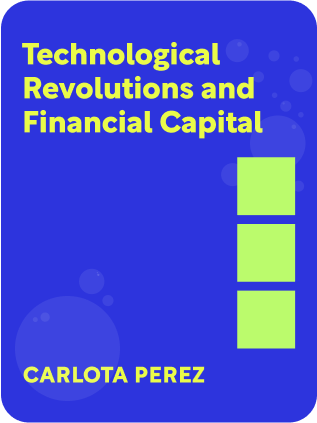

This article is an excerpt from the Shortform book guide to "Technological Revolutions and Financial Capital" by Carlota Perez. Shortform has the world's best summaries and analyses of books you should be reading.
Like this article? Sign up for a free trial here .
What is the book Technological Revolutions and Financial Capital about? What criticisms are there about the model in this book and what gaps are there in how these revolutions work?
In the book Technological Revolutions and Financial Capital, author Carlota Perez outlines how technological and industrial revolutions come about. This model focuses on the conditions necessary for these revolutions, but of course, there are criticisms of this theory.
Read more about criticisms of Technological Revolutions and Financial Capital and how Perez addresses these concerns.
Addressing Criticisms of Technological Revolutions and Financial Capital
Carlota Perez addresses a few arguments against her model of technological revolutions in the book Technological Revolutions and Financial Capital. Read about these criticism and Carlota Perez’s responses below.
This model doesn’t perfectly apply to this and that situation.
The four phases model is deliberately meant to be impressionistic. Each revolution has unique ideological, institutional, political factors that lead to particularities, but the general shape holds true. This is outlined in Technological Revolutions and Financial Capital.
For instance, in the third revolution, madness in the US stock market occurred more during 1903 and 1907 during a “frenzied Synergy” in a strong drive to forge ahead.
Further, the Great Depression in the USA after 1929 lasted especially long. Perez suggests that Roosevelt’s New Deal would have erected the structure for successful synergy, but these were opposed for fear of socialism and inordinate state intervention in the economy. It took the military-industrial complex in World War II to teach how state and capitalism could coexist. (Shortform note: others argue that artificial wage floors suppressed employment and output, or that insufficient fiscal stimulus was applied.)
This model should show up in economic analysis and in aggregate variables like GDP.
There is no expectation of neat upswings and downswings in aggregate metrics like GDP. Aggregate figures have a tendency to conceal what is really going on.
The Technological Revolutions and Financial Capital model argues for increasing differentiation within the economy. Some branches grow at very high rates while others are stagnating. Maturity of the previous revolution is occurring in the background of Irruption of the new one. Whether the sum of these trends shows up in aggregate metrics depends on the relative weights and relative growth rates.
Furthermore, many measuring attempts use money values, but there are really “two moneys” operating under one. Given the rapid improvement in technology, it is hard to control the value of money across two periods. Money buying telecom today is not the same value as money buying furniture in the 1970s. Even for the same good, the decreasing prices and increasing volume make measurement difficult – how do you compare one computer in 1960 vs one computer in 2010?
Finally, given the time lag of diffusion of the technology, the core countries in the revolution may be experiencing trouble at the same time that catching-up countries are reaching their maximum height.
However, in the synergy phase, there should be stability of relative productivities in certain branches. This does not last long, as in maturity there is heterogeneity in dynamic growth of latecomer branches and sluggish growth in the now traditional core industries.
Cycles must be simultaneous worldwide phenomena.
Proponents of long-wave Kondratiev cycles expect worldwide progress coinciding in all sectors and geographies at once.
In reality, diffusion tends to propagate in ripples, both across sectors and across geographies.
Between sectors, the most closely connected industries form very high synergy and intensive feedback effects. This establishes the paradigm and lowers cost of adoption for an ever-wider circle, until it penetrates the whole economy.
(Shortform example: in the information age: commerce and media were synergistic and developed quickly (selling people things enabled advertising which enabled media). Later, wide diffusion of the paradigm allowed for adoption of digital tools in farther-out industries like healthcare and government.)
Geographically, the process is similar. The paradigm spreads in the core country and then, as Maturity arrives and markets stagnate, propagates to the periphery. Through the life cycle of the revolution, the core country begins as a net exporter of the technology, then becomes a net importer as the paradigm reaches the periphery. Whether any particular country in the periphery adopts the new paradigm depends on its ability to take advantage of the opportunity.
This model doesn’t predict all bubbles.
While all technological revolutions have a bubble and a crash, not all bubbles are strictly connected with technological revolutions. Other collapses may have other causal chains.
Carlota Perez’s Technological Revolutions and Financial Capital discusses the ideas that propel industrial revolutions forward.

———End of Preview———
Like what you just read? Read the rest of the world's best book summary and analysis of Carlota Perez's "Technological Revolutions and Financial Capital" at Shortform .
Here's what you'll find in our full Technological Revolutions and Financial Capital summary :
- What happened during the 2000 tech bubble and the 2002 crash
- The 5 technological revolutions that reshaped society since 1771
- How you might be able to predict and prepare for the next technological revolution






